Brazil Design is a project of by Diego Revollo. A masculine, sophisticated and timeless design was the request of the client – a young English businessman who had recently arrived in Brazil and was an admirer of the office’s work. Photography courtesy of Diego Revollo.






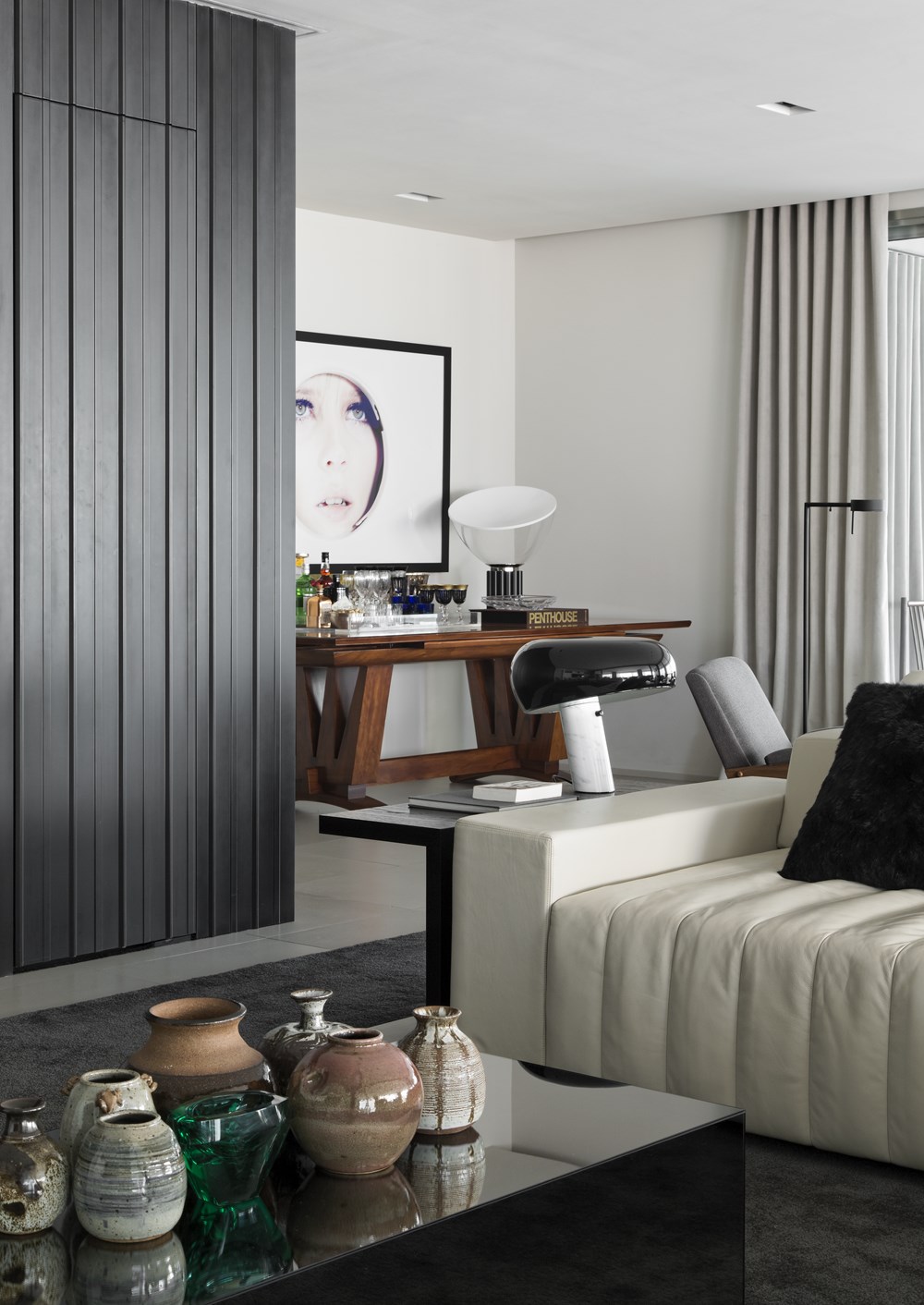





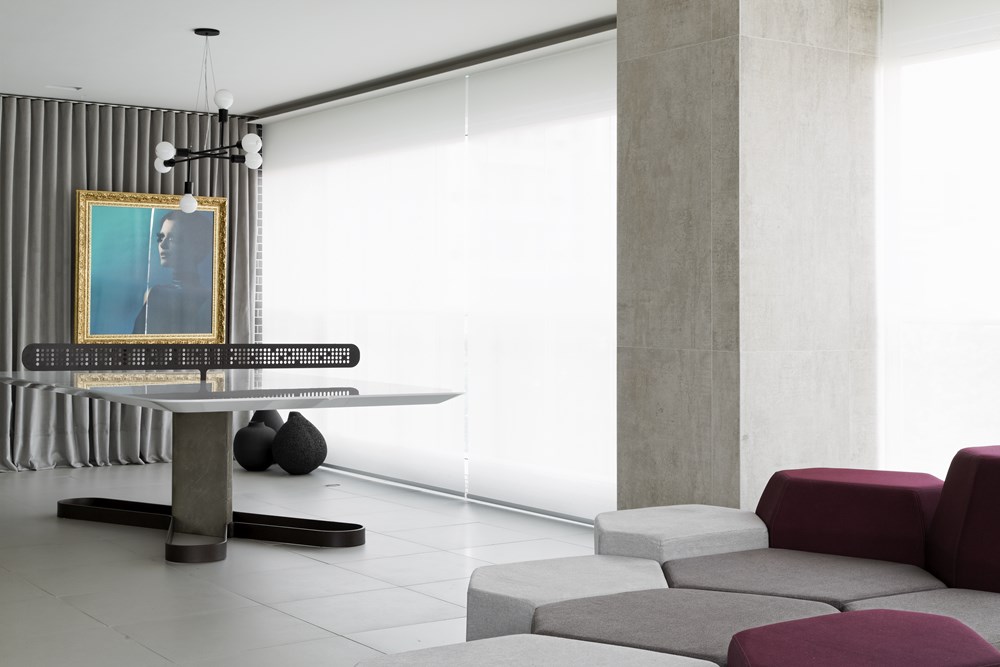
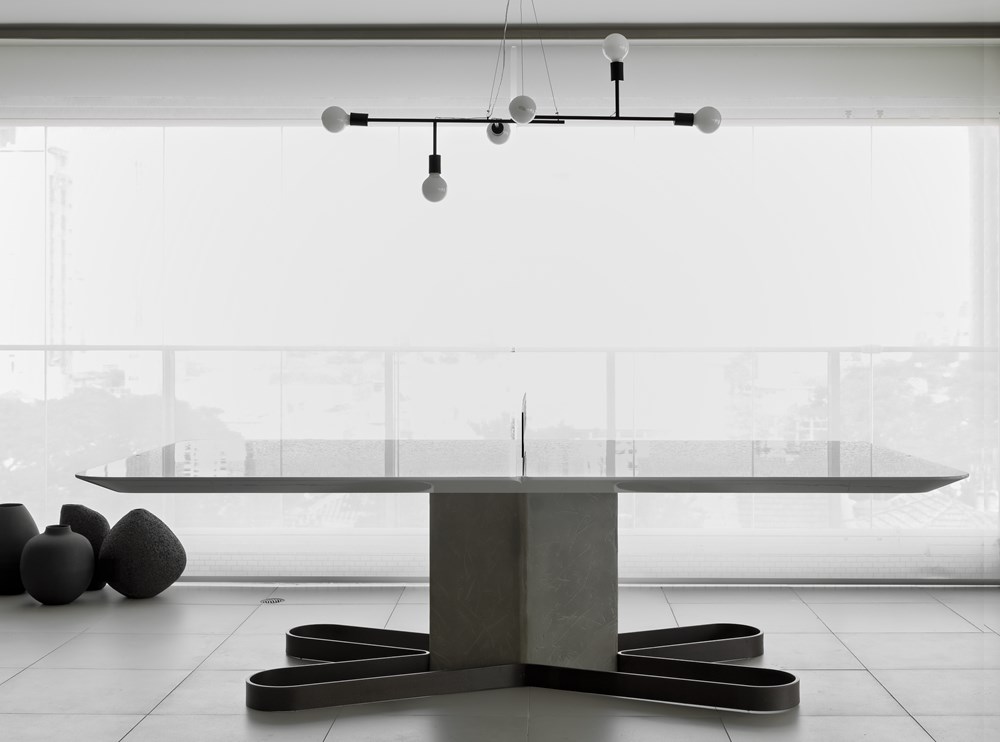


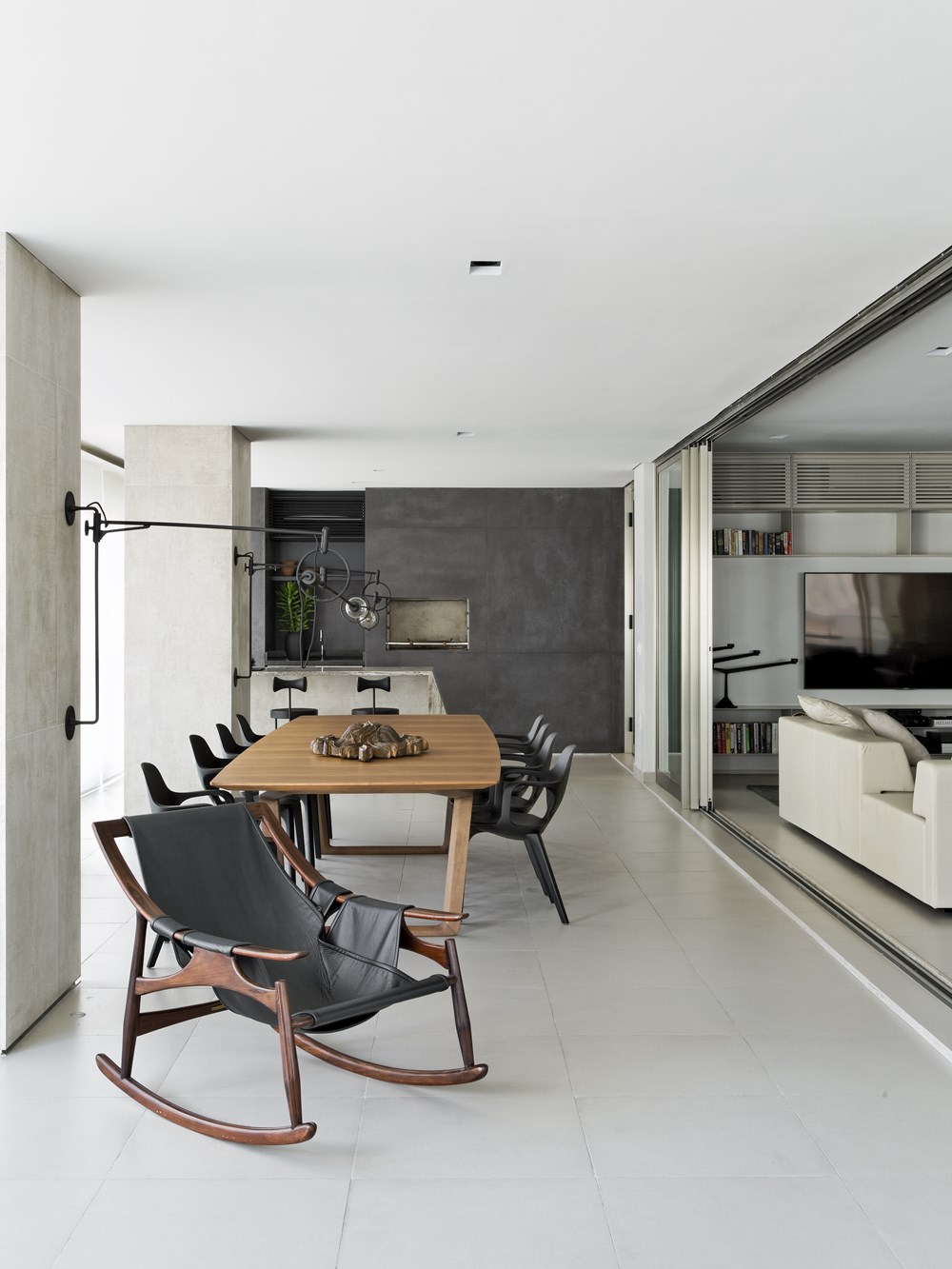










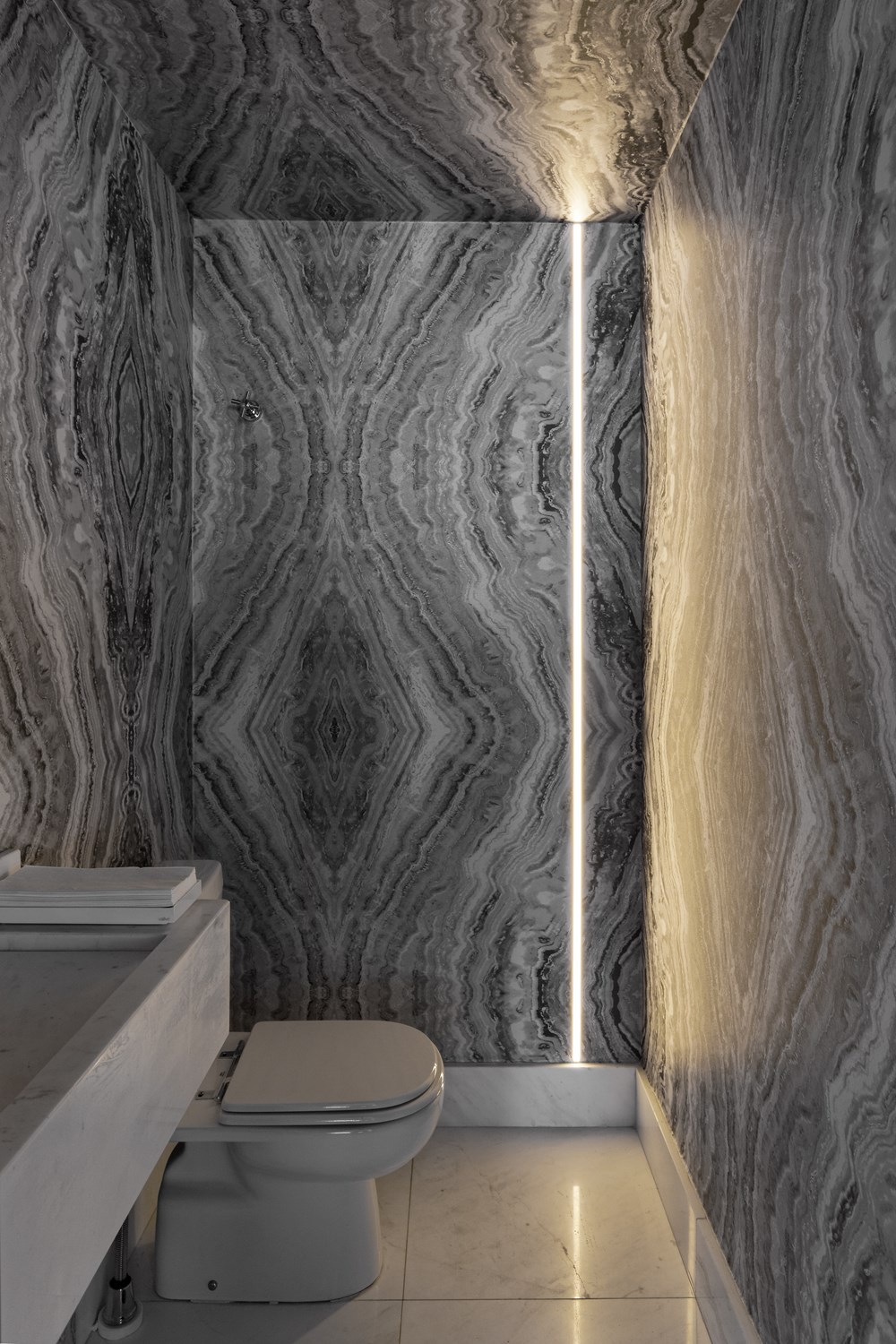


Starting from an excellent existing structure, a 332 m2 new apartment delivered by the construction company, targeted changes were made to the blueprint to guarantee the fluidity and integration of the spaces.
The layout, designed for hosting and strengthening conviviality, stands out due to the sequence of warm and interconnected environments. There is no single room and there are no small isolated spaces. In this apartment there are harmonious spaces with multiple functions that can be set in motion according to the occasion.
To give it personality, impact and to accentuate the masculine character of the project, a wooden panel, in black and with a unique design developed by the office, alludes to industrial metal sidings. The set of sliding and pivoting doors covers the entire perimeter of the entrance hall and creates a black, sophisticated and slightly industrial volume that contrasts the gray shades of the rest of the structure.
In the decoration, what seemed improbable is the great allure. Instead of working with international brands, already known and admired by the young Englishman, the office tried to present the client with an interesting sample of Brazilian furniture and design. The classics like Zanine Caldas and Sergio Rodrigues, the consecrated Jader Almeida and Ronald Sasson, as well as recent and no less talented names like Gustavo Bittencourt and Mula Preta, amongst others, coexist in this project. The result is surprising, since the essentially Brazilian form, choice of colors, finish and disposition of furniture guarantee an original outcome, which is at the same time cosmopolitan, escaping the traditional regionalist formula for presenting national design.
Once again, in his search for beauty, Diego Revollo creates a unique project, where national design, as the great highlight, lives up to its potential, grants originality and draws in admirers.



